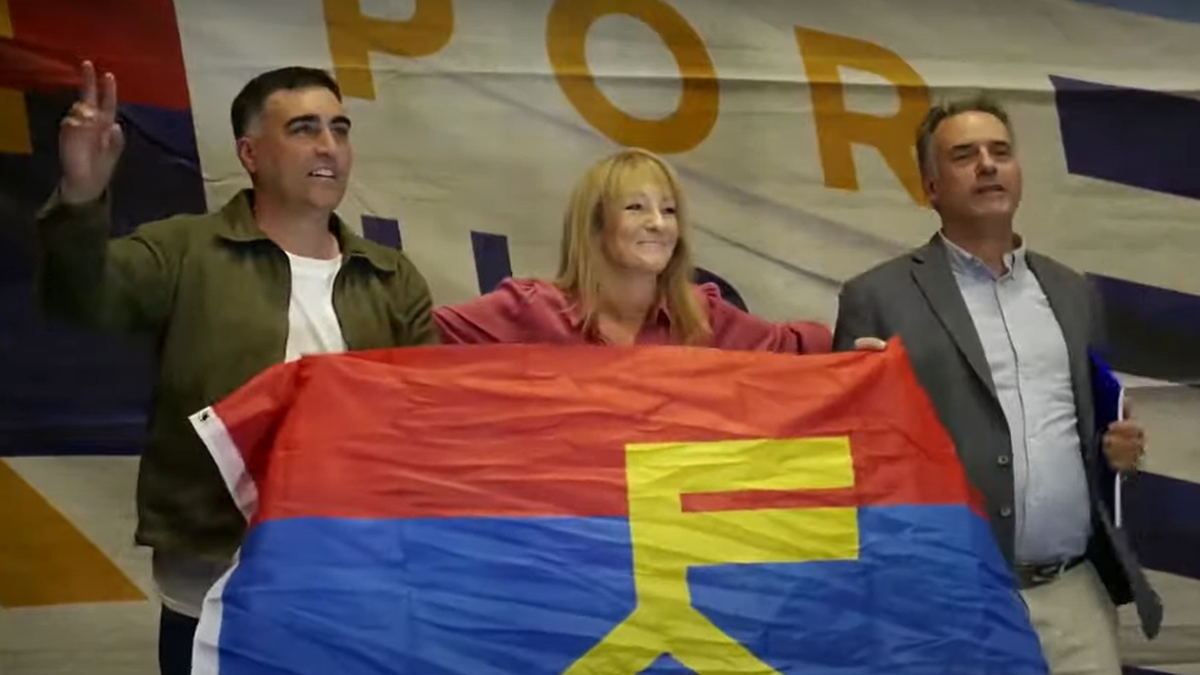At Sánchez de Bustamante 599 there is a stained glass window belonging to a unusual gallery where “A work-An artist” is exhibited and on this occasion it is dedicated to an installation of Mirta Kupferminc, “The Broken House”. It belongs to a series “Clamor” which was first built during the pandemic in the Holocaust Museum in Tucson, Arizona and it was called “Clove in the desert”. It’s conformed by 25×10 cm rectanglesmade in lithography on paper 300 gram cotton. In each rectangle you can see the eyes of men, women and children of different ethnicities looking into the eyes of the observer.
Between the glances appears the First Article of the Universal Declaration of Human Rights translated to 56 languages since these can bring some people closer or further away from others.
Mirrors are seen that reflect the eyes of the observers, the house is disjointed, the floor is unstable, everything covered with many rectangles sewn and sutured manually and lovingly. There is also a large textured stain that violently spills over the faces of the people who stare at us. The artist laments that each time these looks belong to human beings that we cannot achieve live in peace with each other.
Artist of A vast national and international career, he has a body of work closely linked to human rights.. It is recognized as witnessdaughter of father and mother Auschwitz survivorsraises its voice to demand that humanity assume the responsibility that each individual has in building a better world.
Interested in the figure of The witnessin 2006 he exhibited at the Recoleta Center and in the University of Maryland Art Galleryat the Bernard Heller Museum (Manhattan) “Be witness”a large installation of his exhibition Borges and the Cabala, Paths of the Word with poems by Saul Sosnovskias well as the series presented in the Hood Museum of Vermont “Testimony for the Witness.”
Multiple artist, can address the sculpture, the object, painting, photography, video-art and it is also essentially graphic. Chairs with wings, pencils, labyrinths, mirrors, weaving of words, can combine poetry with great depth, taking us to the essence of the human being that can never be supplanted by any avatar. She is a champion of everything related to memory, the memory of the Jewish people and our civilization. It would be impossible to list the works carried out: “The infinite library“, “Centuries of Memory”, “Embroidered on the skin of memory”, “The body of the word”, digital photographs, his “Lace of words”.
We remember the words of Corinne Sacca Abadi on the occasion of an exhibition several years ago, in the Recoleta Center in which he “gathered and recapitulated fragments of the history of humanity through the articulation of iconography, myths, stories and essences of the different cultures that populate our universe to revisit them in an intersection that transcends their contemporaneity to become universal.” The poet Eliahu Toker described her as a true person, a true artist, her work is rooted in the spiritual. A born humanist, since his work is related to identity, testimony and memory. Every time she exhibits, the viewer enriches your perception, his images leave deep traces and aesthetic consequences. The installation can be seen from the street during the day and until midnight. EOn December 6 at 6 p.m. there will be an activation in which visitors will be able to bring their photos of looks to integrate them into the installation.
Source: Ambito
I am an author and journalist who has worked in the entertainment industry for over a decade. I currently work as a news editor at a major news website, and my focus is on covering the latest trends in entertainment. I also write occasional pieces for other outlets, and have authored two books about the entertainment industry.




